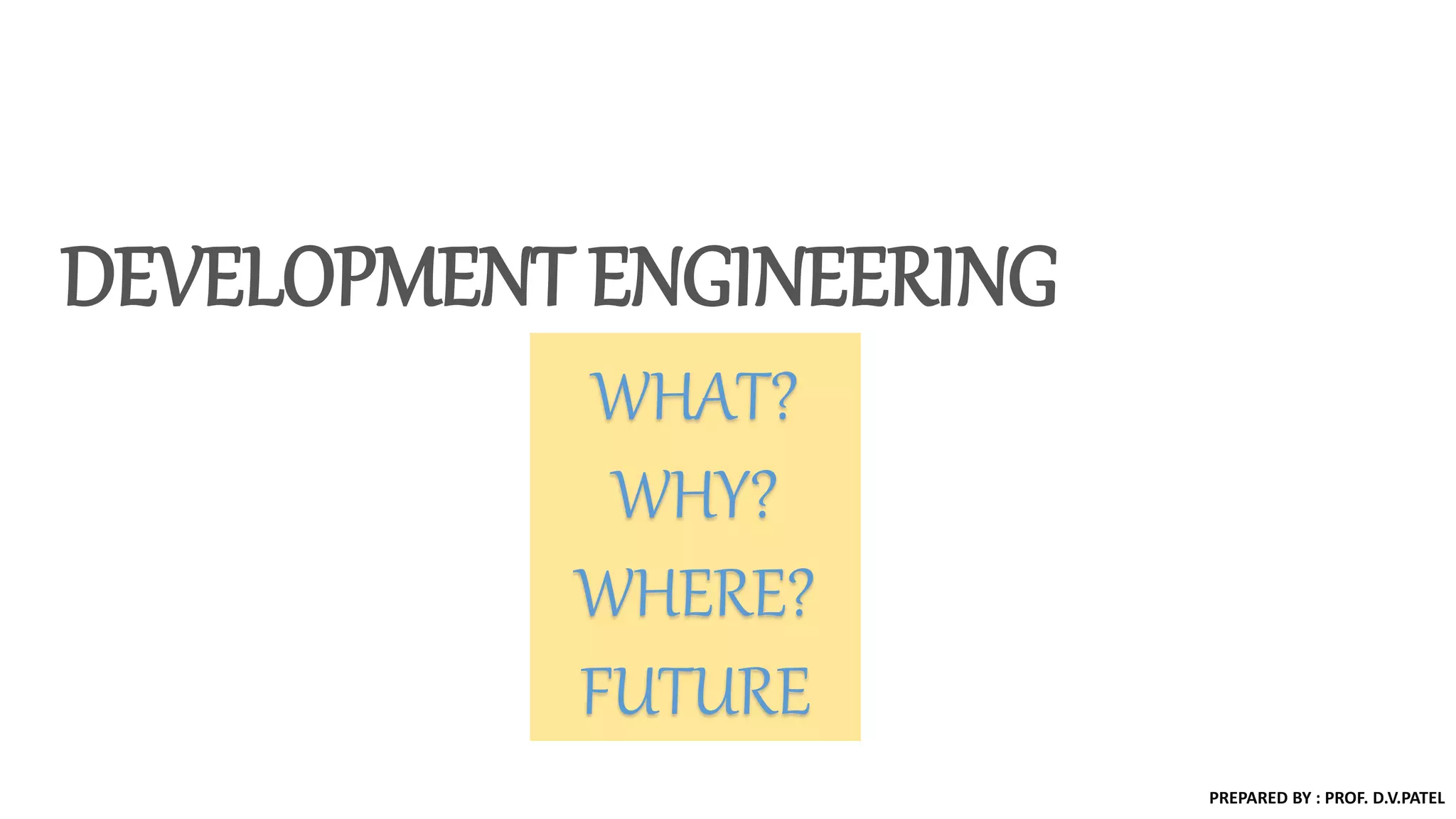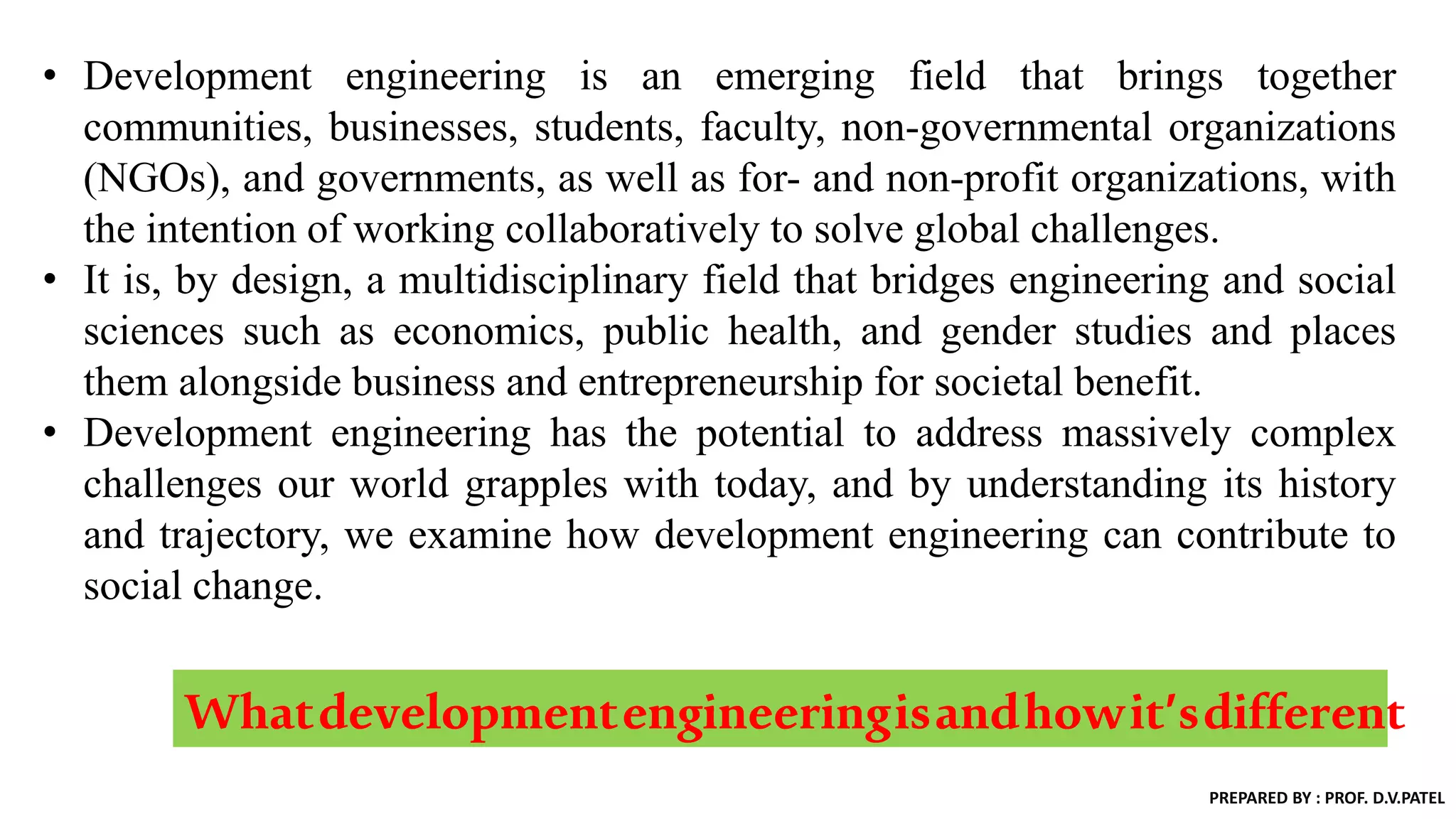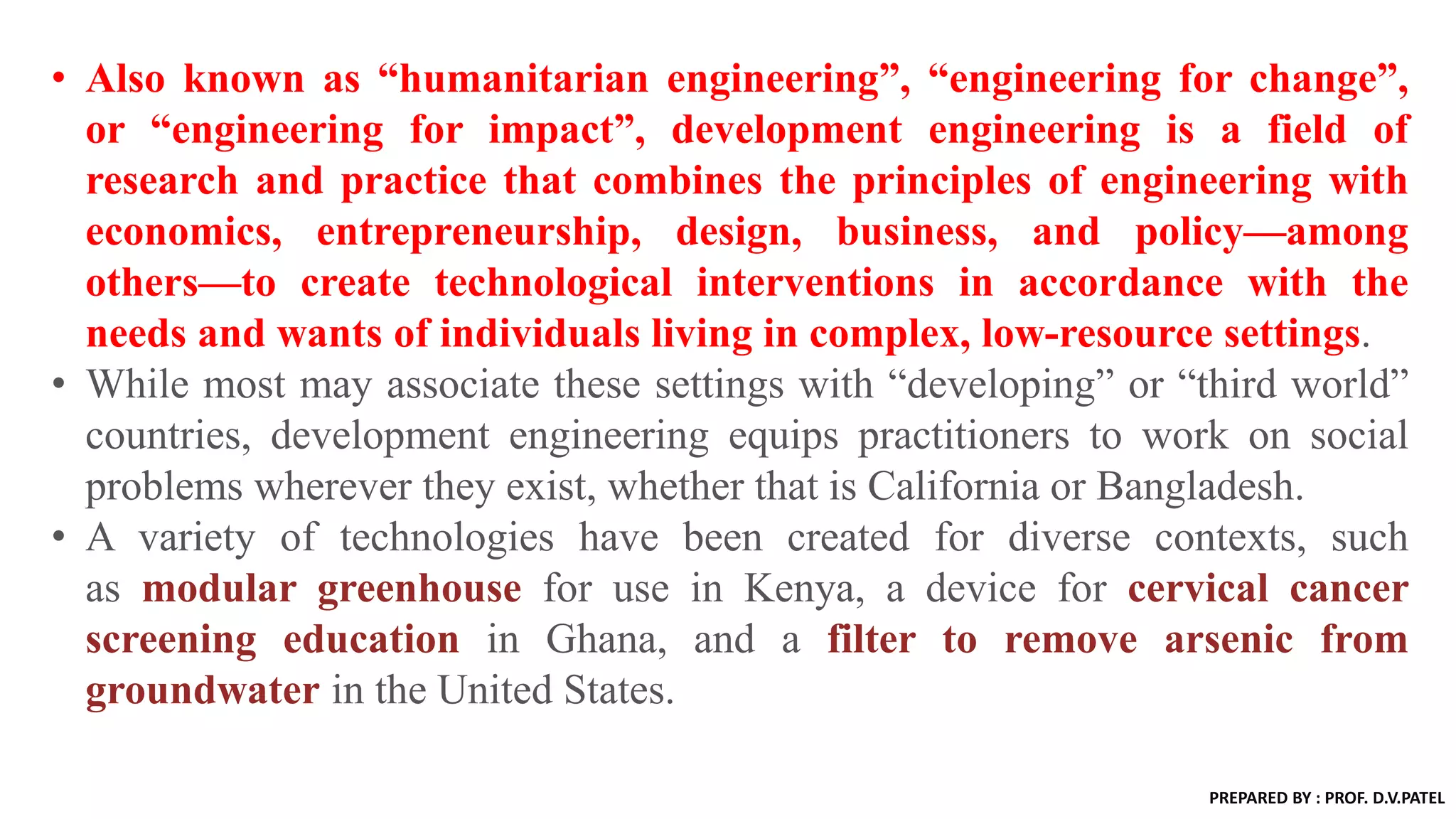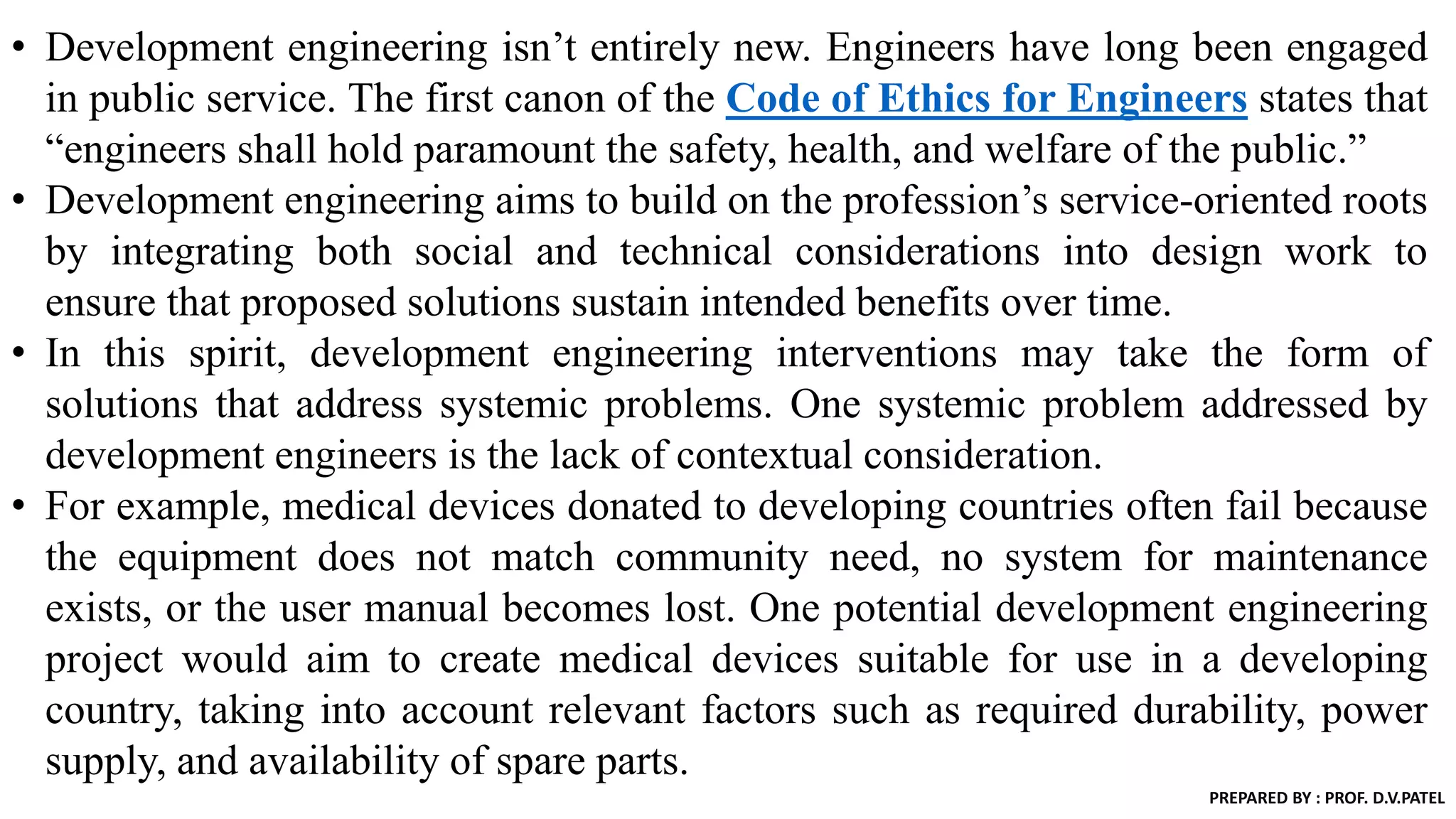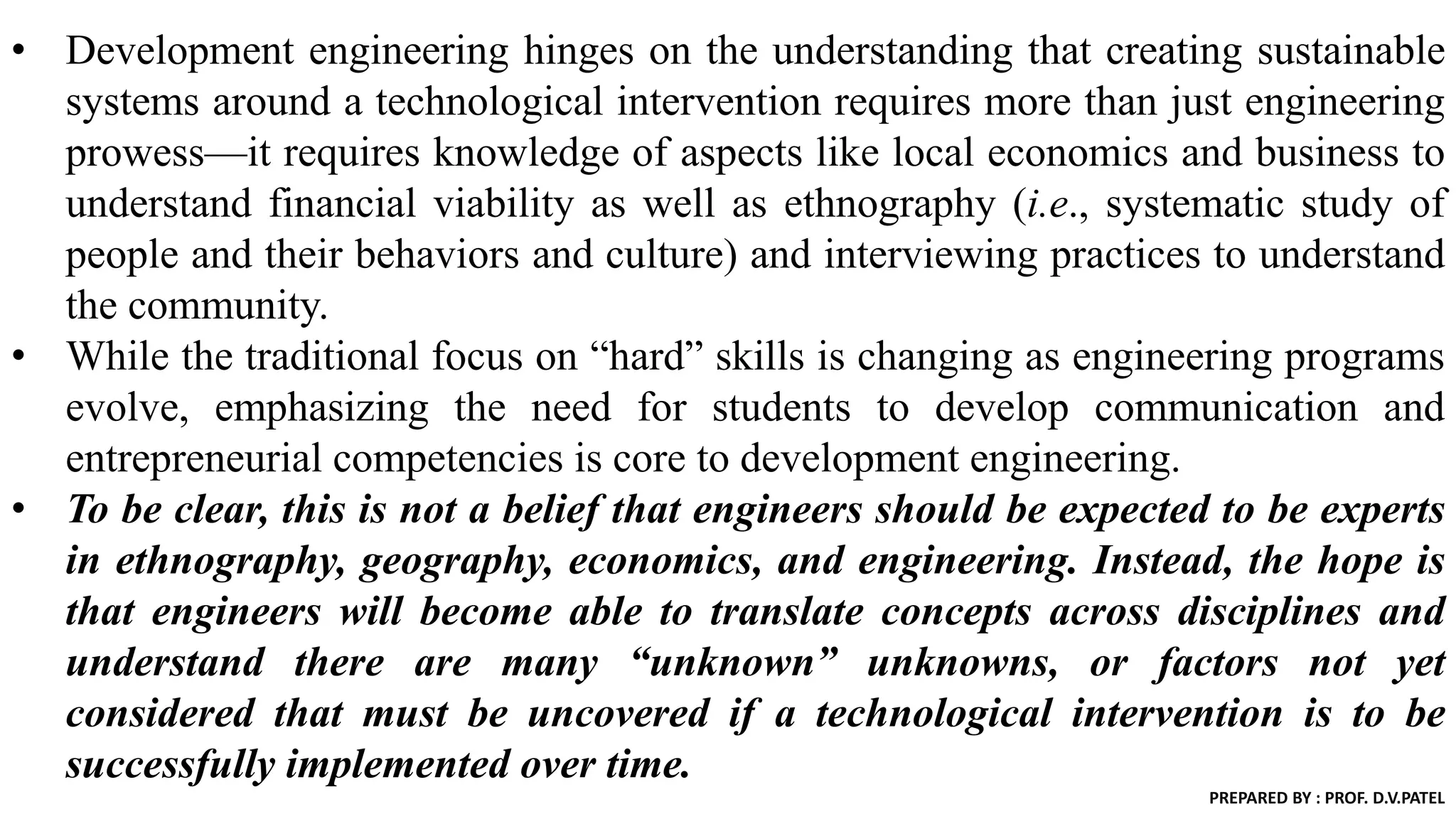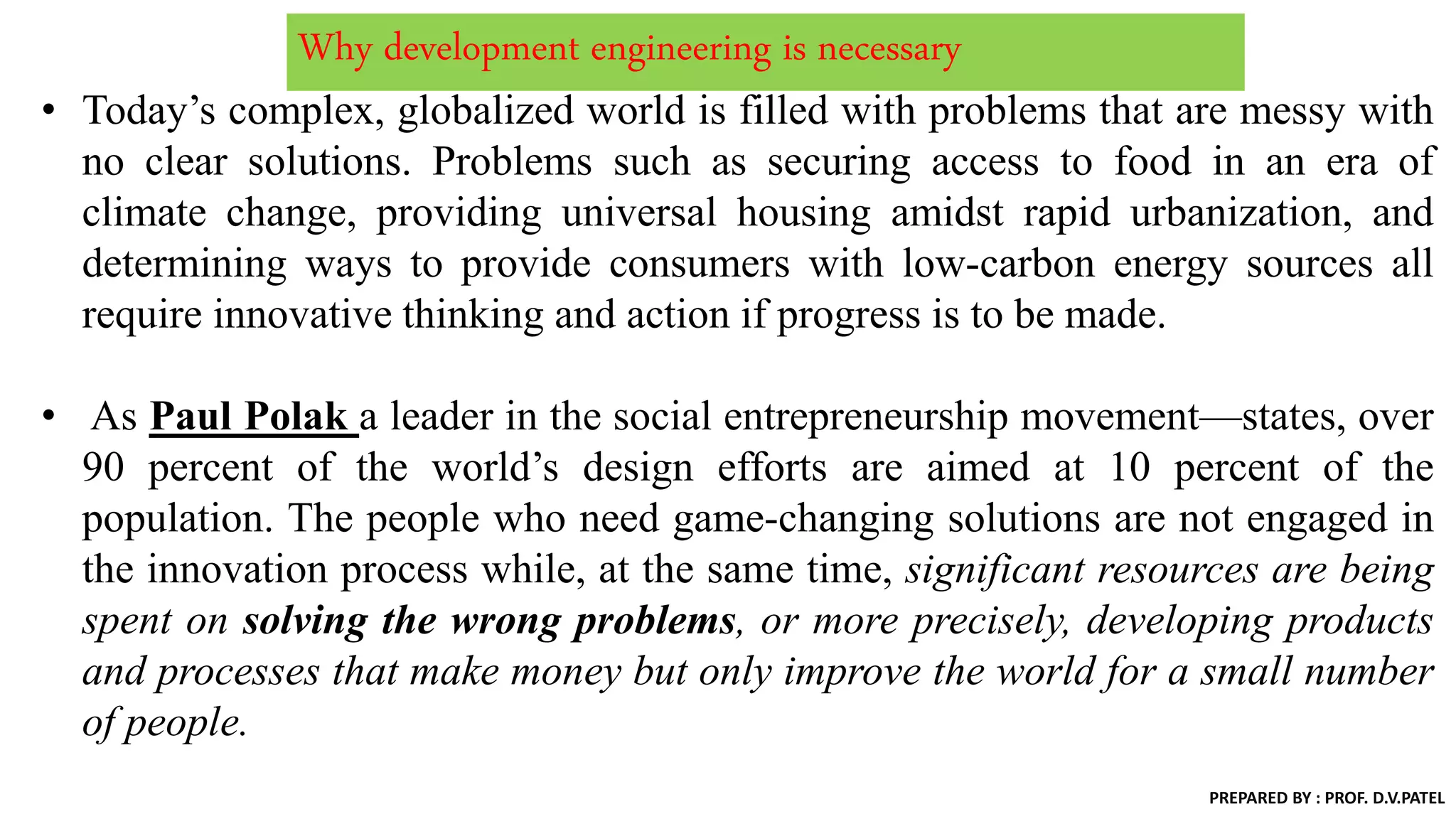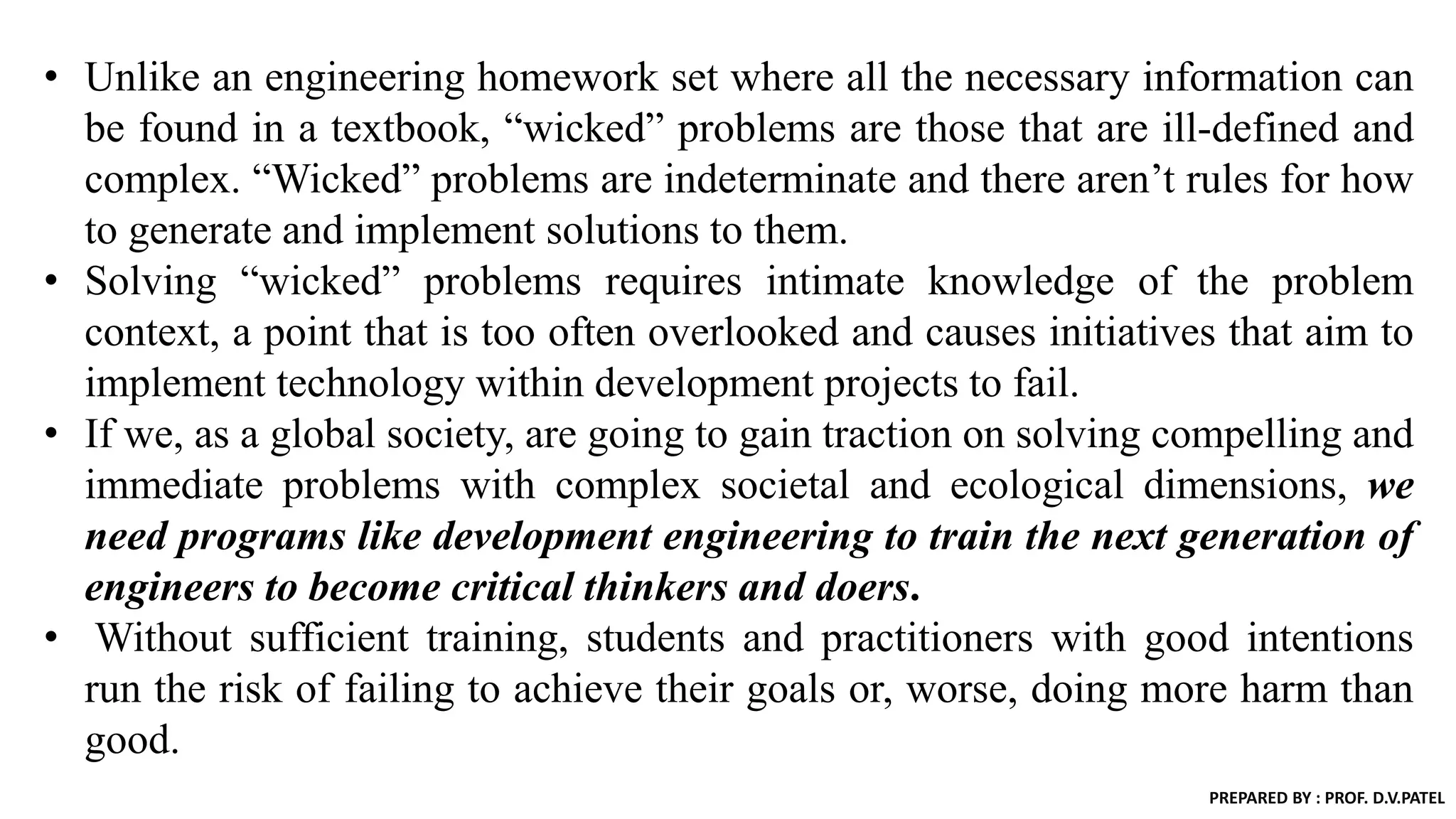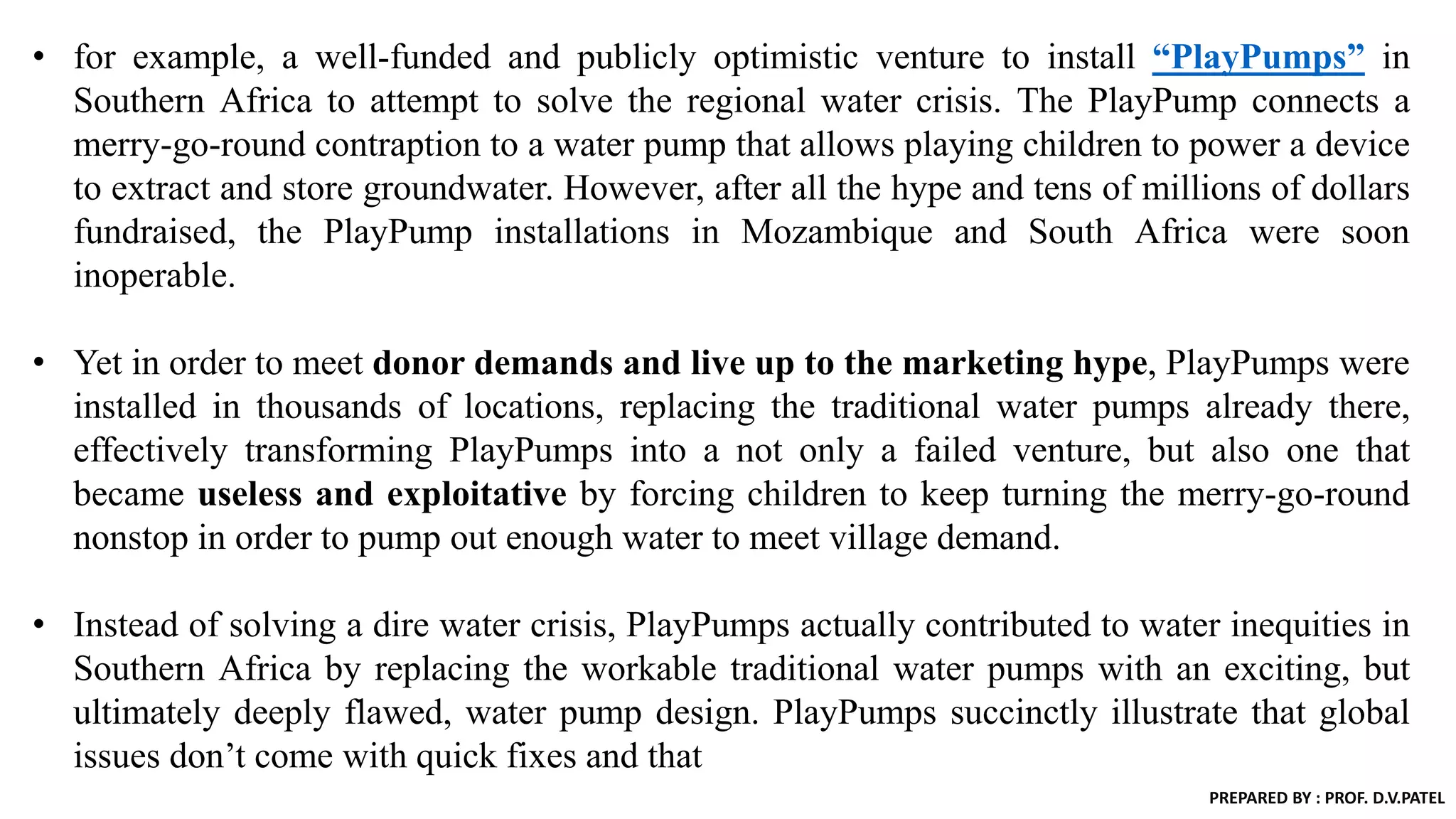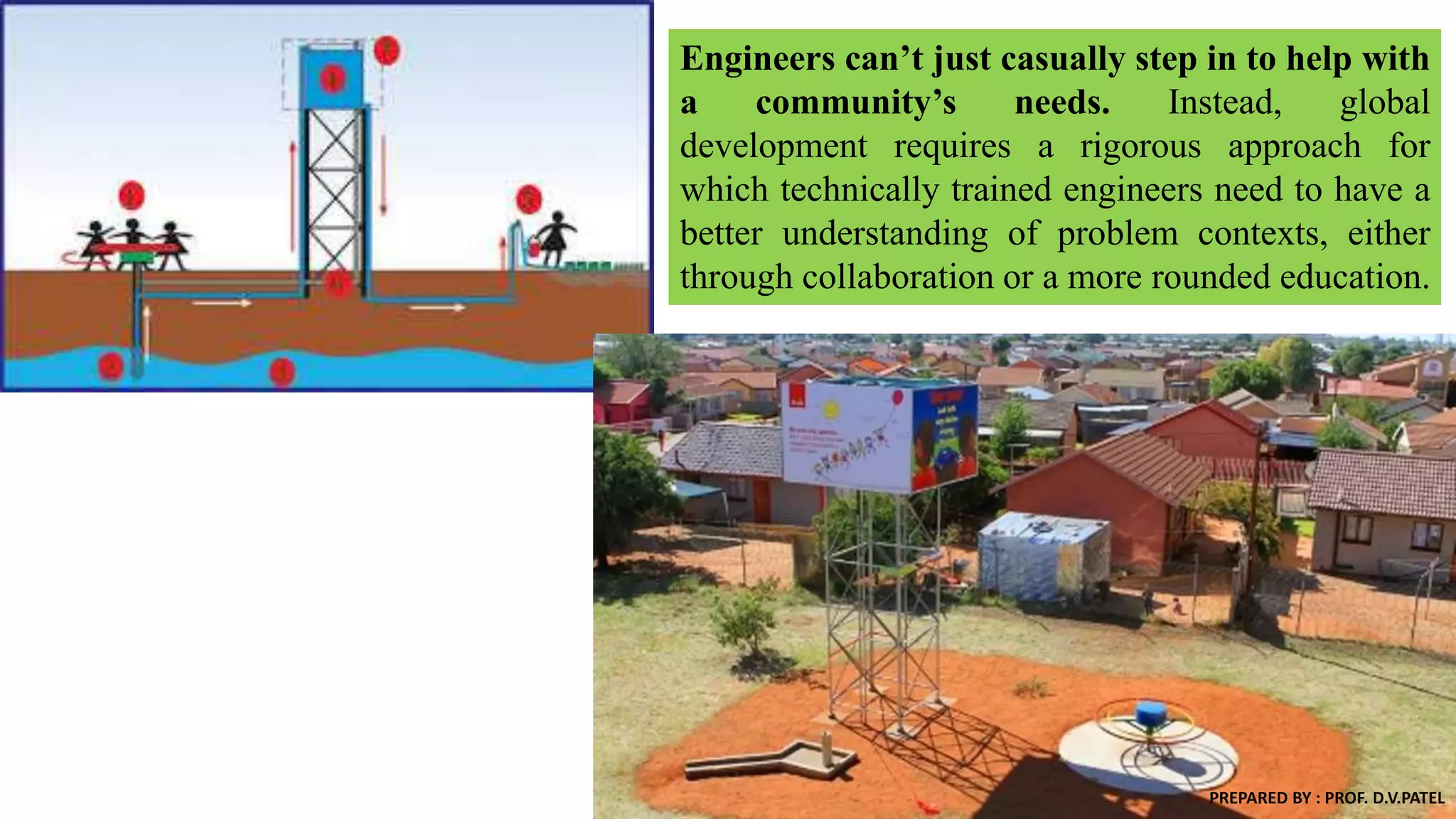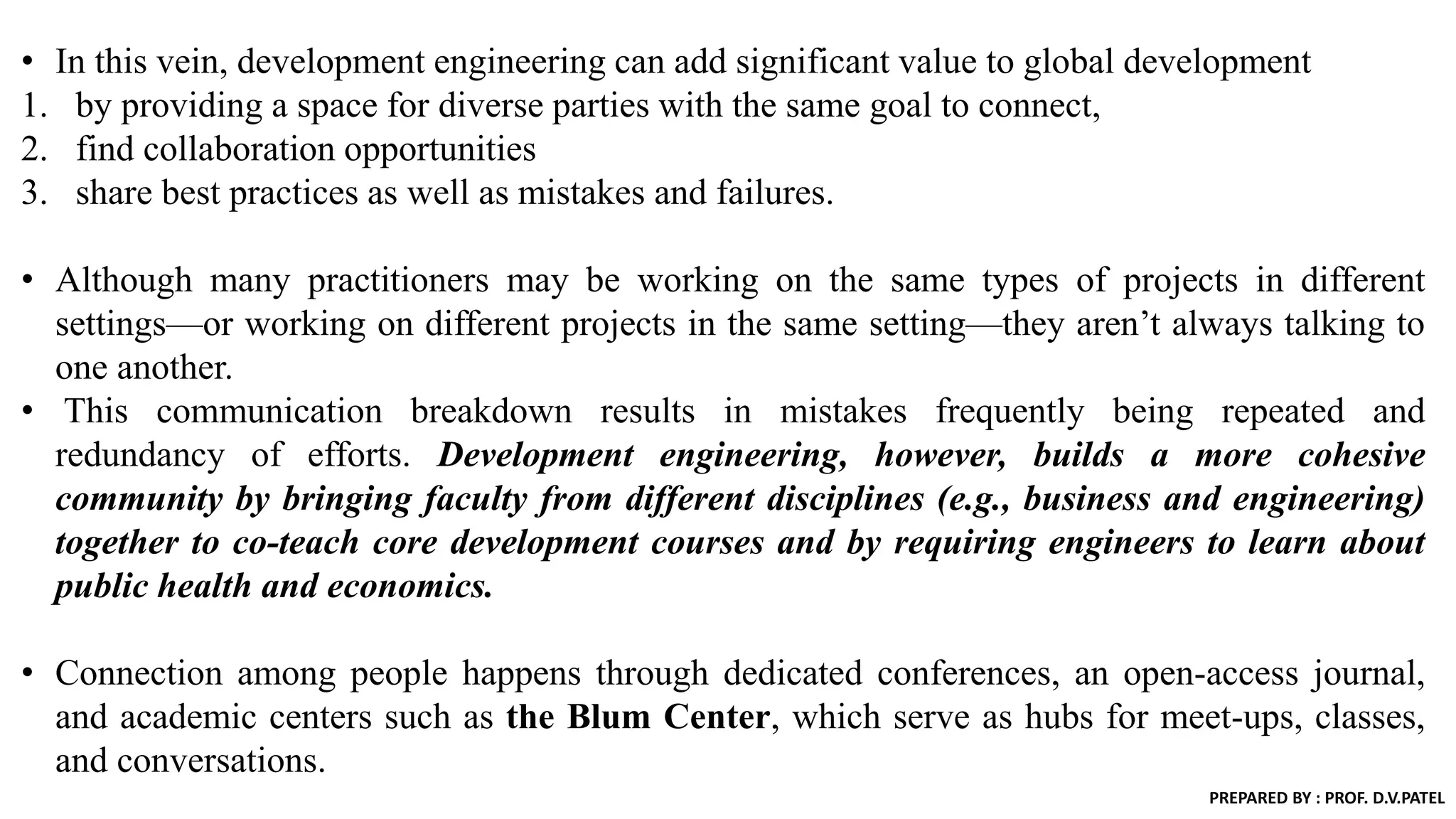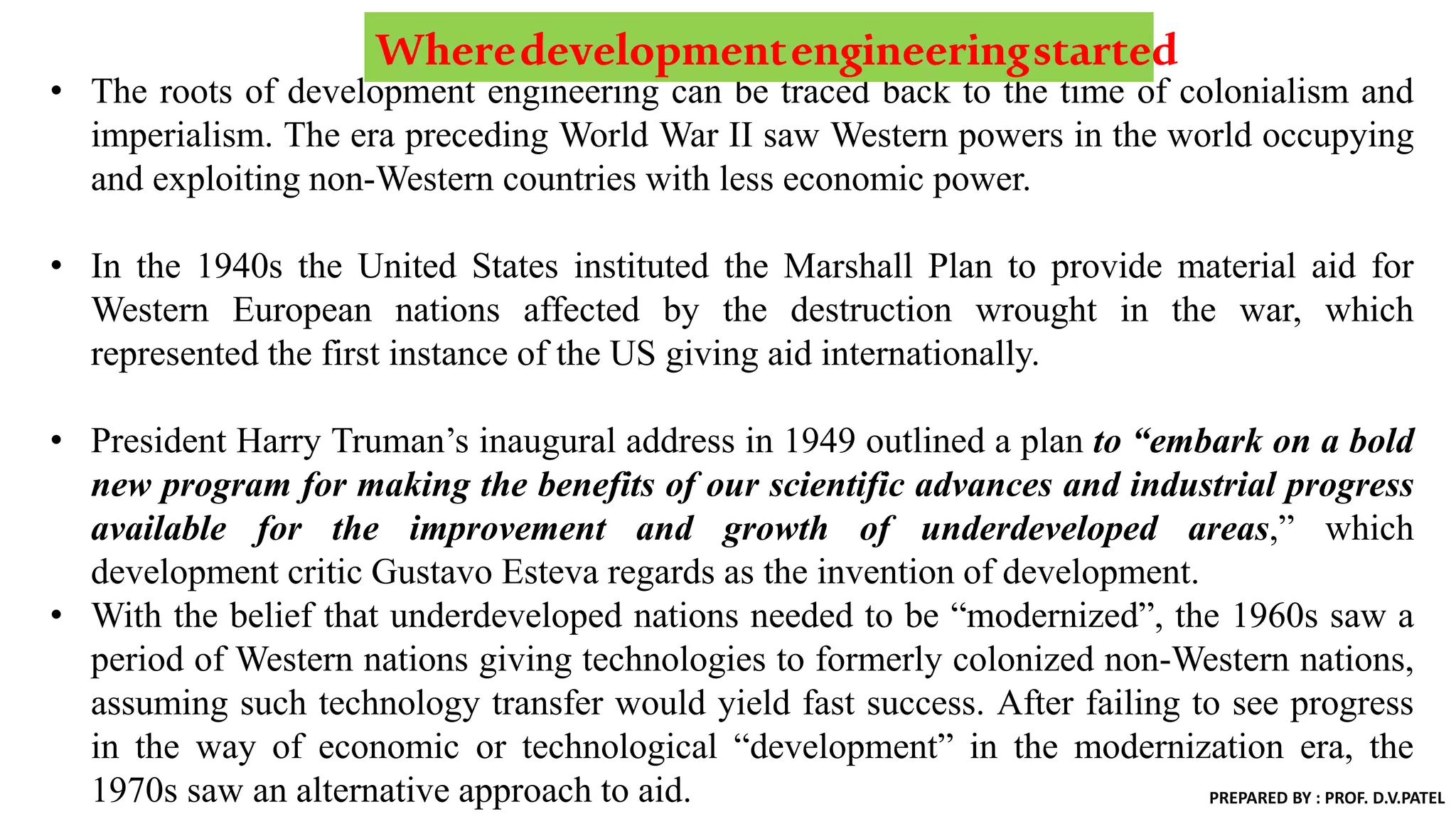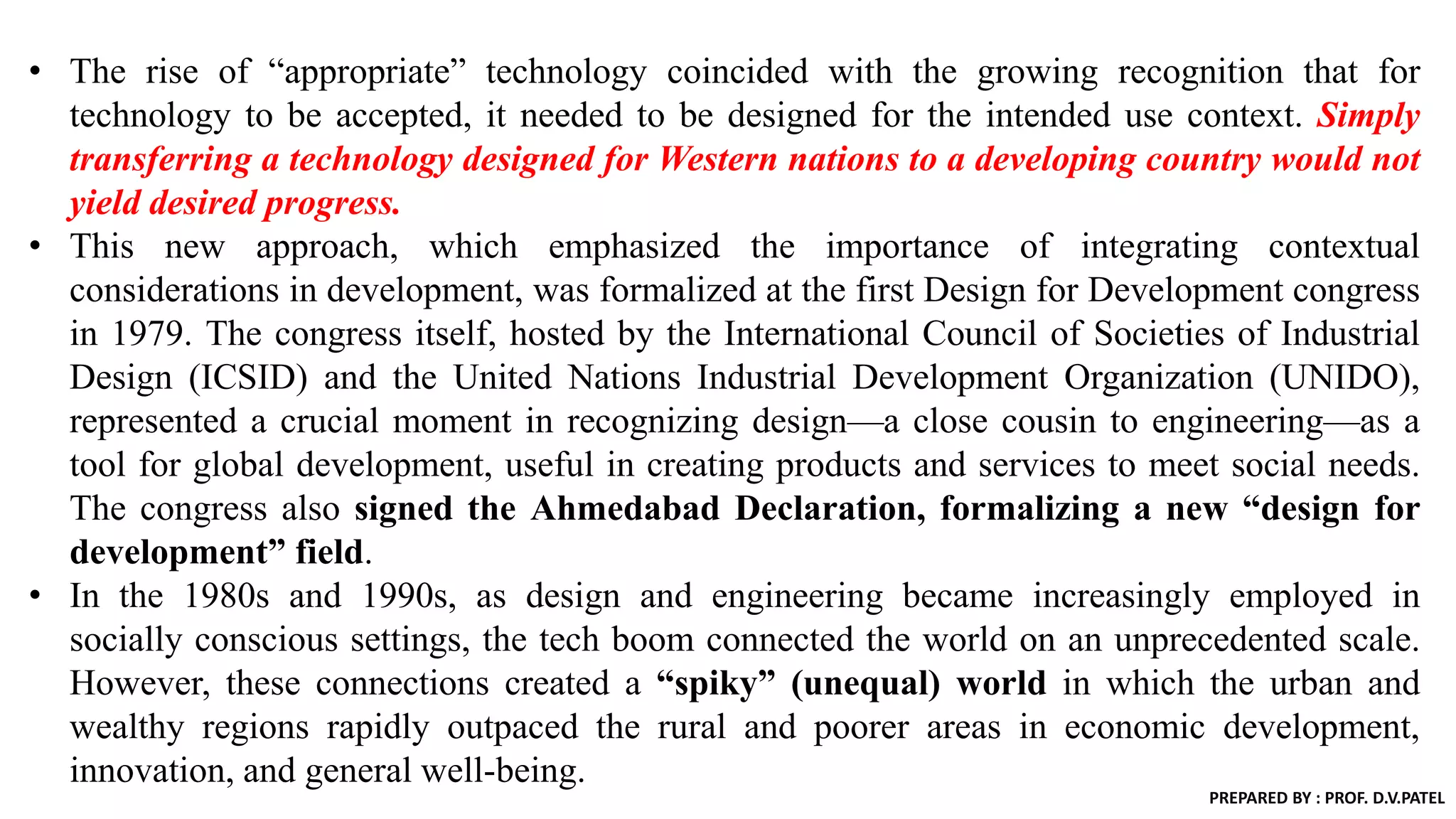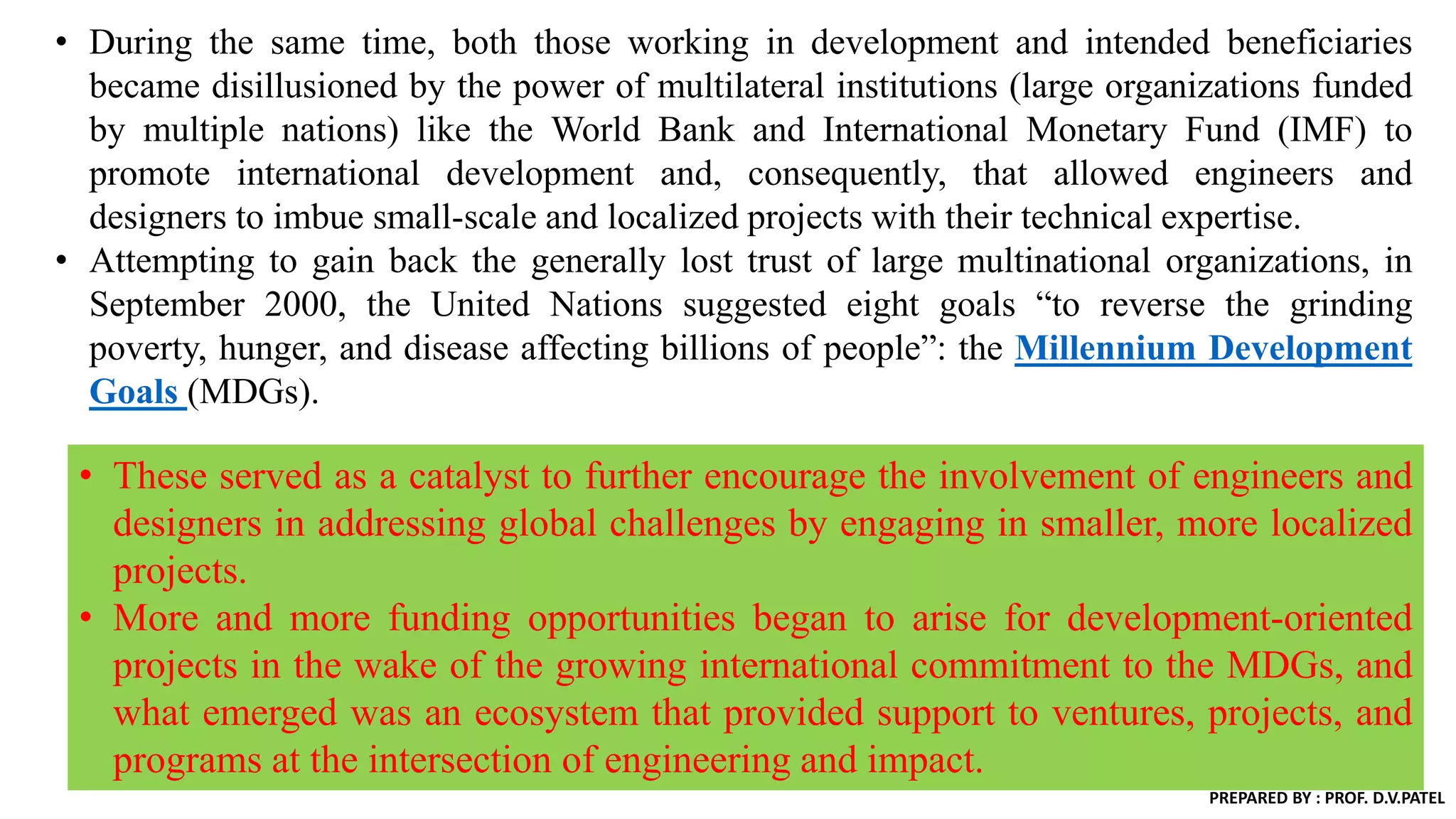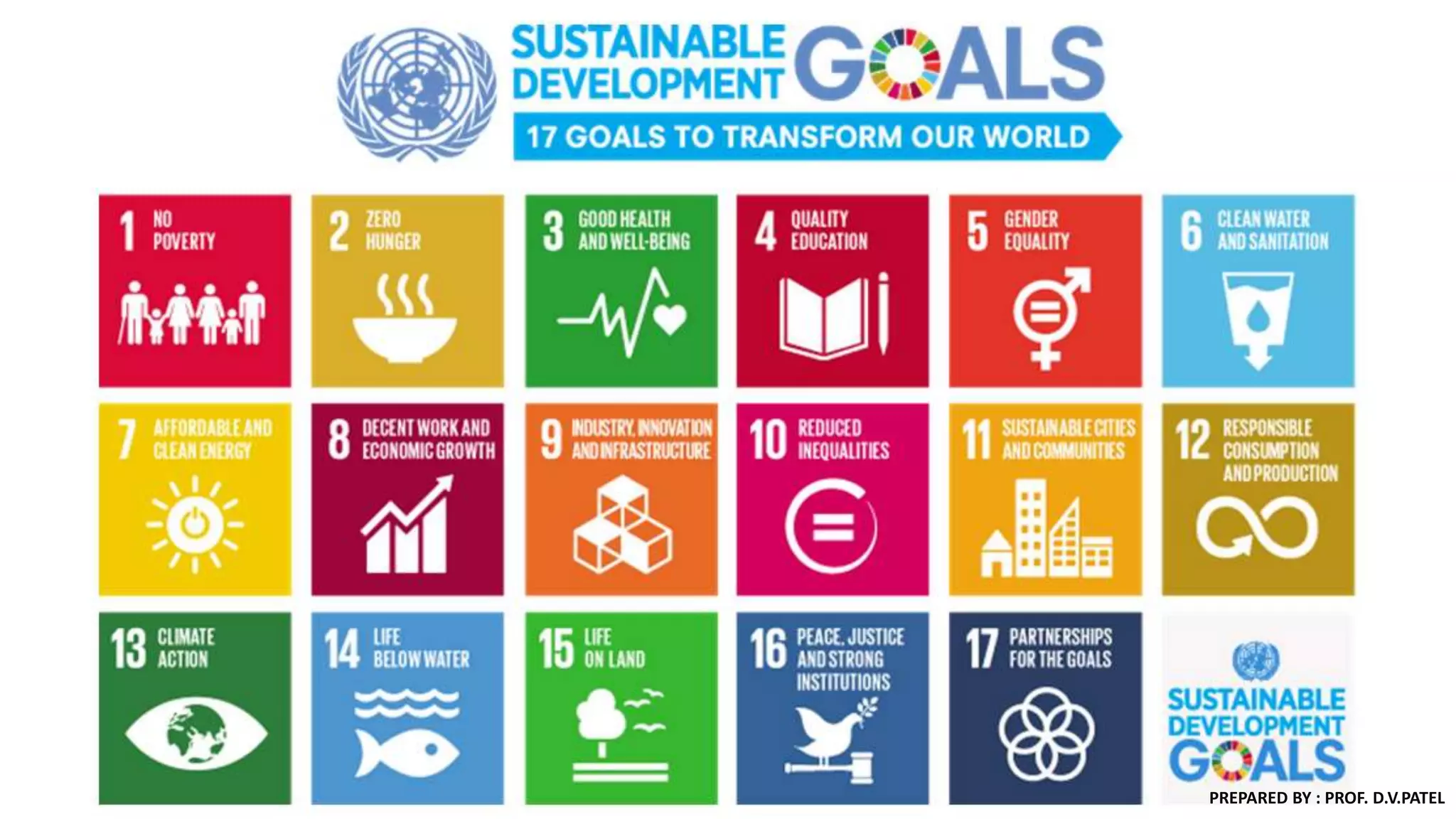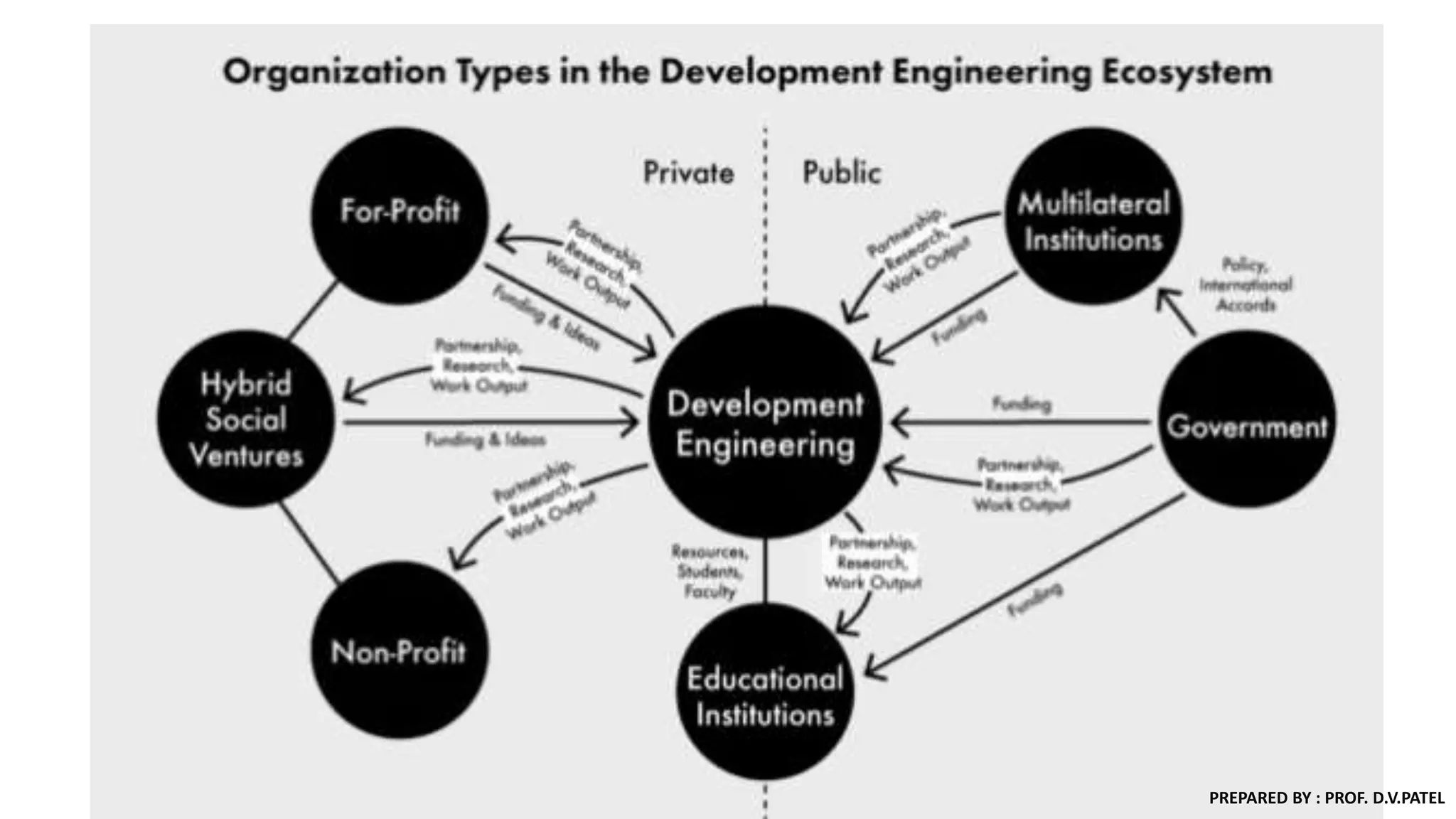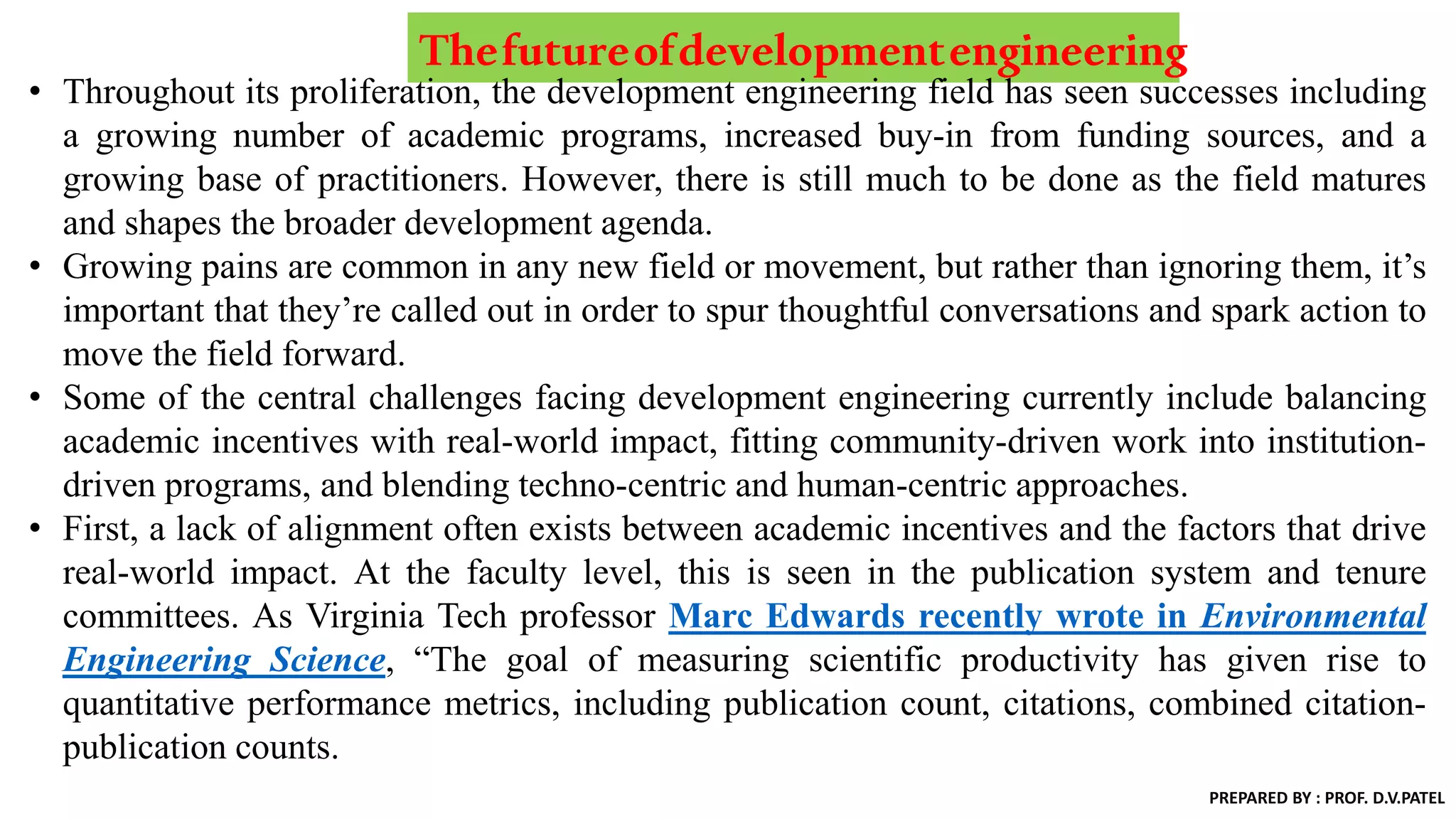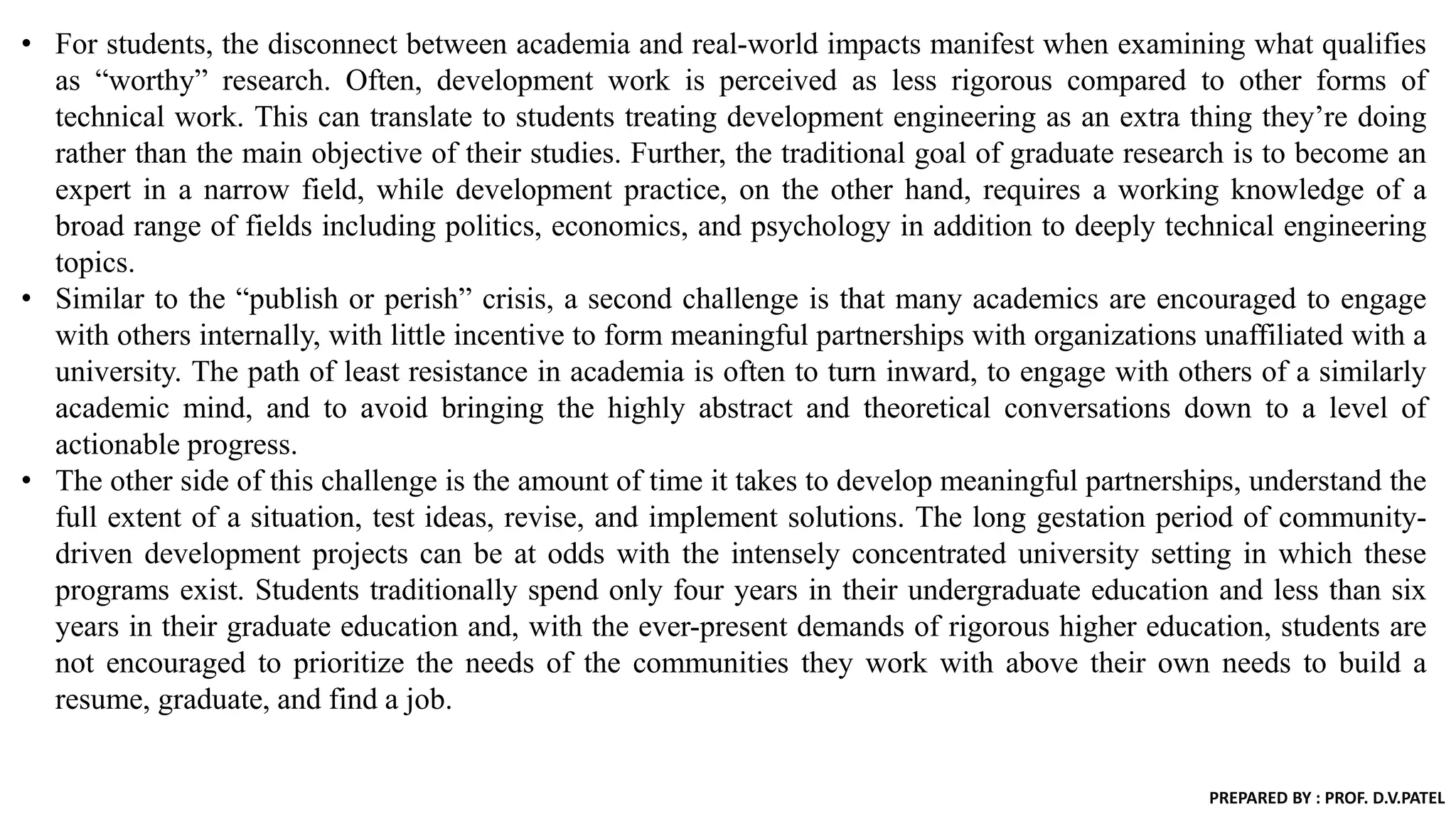Development engineering is an emerging multidisciplinary field that combines engineering principles with other fields like economics and social sciences to create technological solutions for global challenges. It aims to ensure solutions are tailored to the needs and context of users, especially in low-resource settings. The document traces the history and evolution of the field from efforts in colonial-era aid and technology transfer to a growing recognition of the need to involve local communities and consider social factors. It discusses some ongoing challenges for development engineering in balancing real-world impact with academic incentives and timelines.
